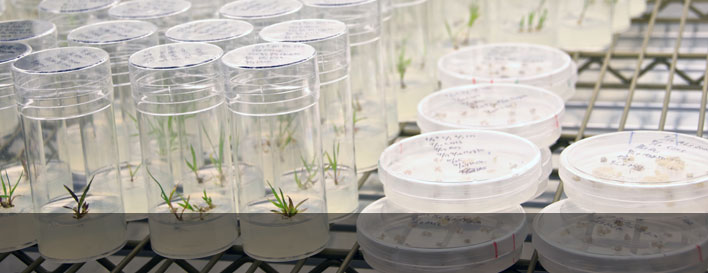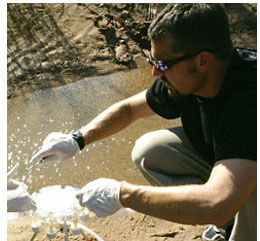Dr. Bradley Stevenson


Microbial Ecology and Environmental Microbiology

Microbial life represents the overwhelming majority of biological diversity on our planet. Most microbially-driven processes are polymicrobial, meaning that they are the function of complex assemblages of organisms that compete, coexist and cooperate. Dr. Stevenson's research group uses powerful molecular tools and cultivation-based approaches to study microbial assemblages, novel microorganisms, and their roles in;
- decomposition of organic substrates
- corrosion of metal surfaces
- degradation of hydrocarbon
- production of biofuels
The group's research encompasses the use of model organisms to study fundamental ecological principles, physiological and molecular characterization of various microbial communities, and the combination of molecular screening and non-traditional cultivation approaches in the isolation of previously uncultured bacteria.
Emerging research in Dr. Stevenson’s laboratory is focused on the physiology of microaerophilic bacteria and their contribution to global nutrient cycling in terrestrial and aquatic ecosystems.
The team's biofuels research includes studies of several acetogenic clostridia, which are capable of converting synthesis gas (“syngas”; largely CO, CO2, and H2) to the liquid biofuels ethanol and butanol. Transcriptomics and genetic engineering approaches are used to better understand and optimize biofuel production.
As part of his outreach efforts, Dr. Stevenson has developed the Environmental Microbiology and Biotechnology Summer Undergrad Course that is held on the University of Oklahoma Campus in Norman. For more information about the summer program, visit www.okepscor.org.
Pictured: Dr. Stevenson "bio-blitz" sampling at a research site
Michael Ukpong | Graduate student | Nigeria | [email protected]
- Stevenson, B. S., and T. M. Schmidt (2004). “Life history implications of rRNA gene copy number in Escherichia coli.” Appl. Environ. Microbiol. 70:6670-6677. Applied and Environmental Microbiology. doi: 10.1128/AEM.70.11.6670-6677.2004.
Access the publication
- Stevenson, B.S., Eichorst, S.A., Wertz, J.T., Schmidt, T.M., and J.A. Breznak (2004). New strategies for the cultivation and detection of previously uncultured microbes. Applied and Environmental Microbiology. 70:4748-4755.
- Hashimoto, J.G., Stevenson, B.S., and T.M. Schmidt (2003). Rates and consequences of recombination between Ribosomal RNA operons. Journal of Bacteriology. 185: 966-972.
- Bratina, B.J., Stevenson, B.S., Green, W.J., and T.M. Schmidt (1998). Manganese reduction by microbes from oxic regions of the Lake Vanda (Antarctica) water column. Applied and Environmental Microbiology. 64:3791-3797l.
Access the publication
- Stevenson, B.S. and T.M. Schmidt (1998). Growth rate-dependent accumulation of RNA from plasmid-borne rRNA operons in Escherichia coli. J. Bacteriol. 180:1970-1972. PubMed Central.
Access the publication
- Stevenson, B.S., A. A. DiSpirito, and T. M. Schmidt (1994). Reduction of enzyme adsorption to polypropylene surfaces in the presence of a nonionic detergent. BioTechniques 17:1048-1050.
